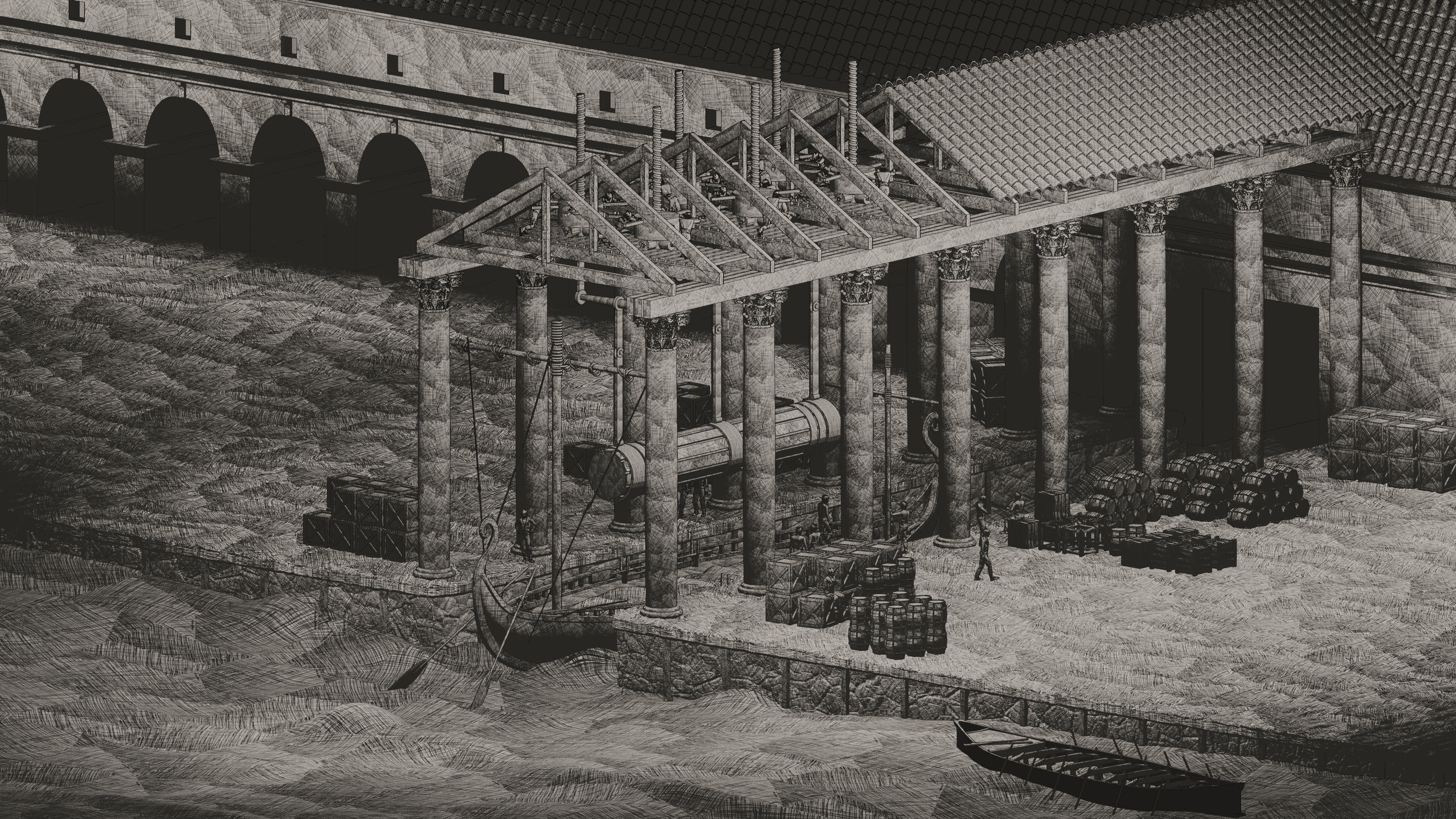Seagoing vessel to barge:
Unloading and loading
During the Renaissance, architects faced challenges in transporting massive columns due to the inadequacy of available ships. Attempts to find suitable vessels proved futile, as the era lacked boats with the necessary capacity, leading to the design and construction of specialized vessels. This endeavor was complex due to the absence of prototypes.
The journey of columns involved multiple transfers between seagoing vessels and barges, adapting to varying water depths and currents. While the specifics of ships and harbor operations are not the primary focus, a basic understanding of harbor structures is necessary.

Wooden trusses, known since Roman times, provided support for heavy loads, but evidence of their use during the Renaissance is indirect. Gasparoni's description of an arsenal with pulleys and winches for moving obelisks highlights wooden structures' capacity for heavy weights.
To depict a plausible Renaissance harbor, contemporary structures like trusses and the infrastructure described by Gasparoni are considered. Trusses' design specifics are explored, with Francesco di Giorgio's drawing providing a suitable model. The proposed harbor infrastructure resembles Roman ship sheds and dockyards, suggesting continuity in design.
Animation
Francesco's machines, detailed in his Opusculum de architectura, are adapted for this operation, with one specific device,
depicted on folio 14R, found to be most suitable. It is designed to lift columns vertically and can be installed flexibly
within the harbor roof to accommodate columns of various sizes economically.